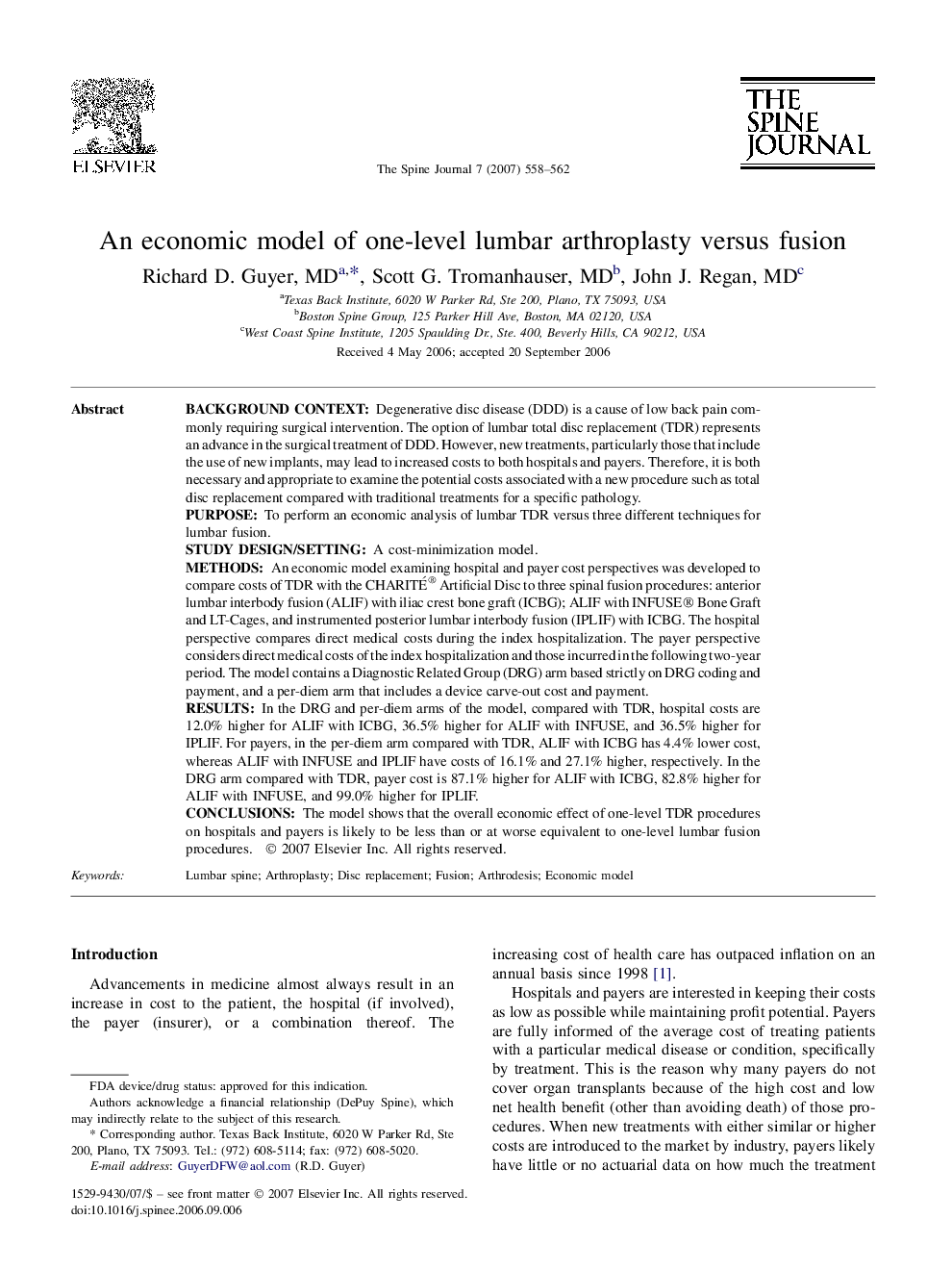| کد مقاله | کد نشریه | سال انتشار | مقاله انگلیسی | نسخه تمام متن |
|---|---|---|---|---|
| 4100151 | 1268673 | 2007 | 5 صفحه PDF | دانلود رایگان |

Background contextDegenerative disc disease (DDD) is a cause of low back pain commonly requiring surgical intervention. The option of lumbar total disc replacement (TDR) represents an advance in the surgical treatment of DDD. However, new treatments, particularly those that include the use of new implants, may lead to increased costs to both hospitals and payers. Therefore, it is both necessary and appropriate to examine the potential costs associated with a new procedure such as total disc replacement compared with traditional treatments for a specific pathology.PurposeTo perform an economic analysis of lumbar TDR versus three different techniques for lumbar fusion.Study design/settingA cost-minimization model.MethodsAn economic model examining hospital and payer cost perspectives was developed to compare costs of TDR with the CHARITÉ® Artificial Disc to three spinal fusion procedures: anterior lumbar interbody fusion (ALIF) with iliac crest bone graft (ICBG); ALIF with INFUSE® Bone Graft and LT-Cages, and instrumented posterior lumbar interbody fusion (IPLIF) with ICBG. The hospital perspective compares direct medical costs during the index hospitalization. The payer perspective considers direct medical costs of the index hospitalization and those incurred in the following two-year period. The model contains a Diagnostic Related Group (DRG) arm based strictly on DRG coding and payment, and a per-diem arm that includes a device carve-out cost and payment.ResultsIn the DRG and per-diem arms of the model, compared with TDR, hospital costs are 12.0% higher for ALIF with ICBG, 36.5% higher for ALIF with INFUSE, and 36.5% higher for IPLIF. For payers, in the per-diem arm compared with TDR, ALIF with ICBG has 4.4% lower cost, whereas ALIF with INFUSE and IPLIF have costs of 16.1% and 27.1% higher, respectively. In the DRG arm compared with TDR, payer cost is 87.1% higher for ALIF with ICBG, 82.8% higher for ALIF with INFUSE, and 99.0% higher for IPLIF.ConclusionsThe model shows that the overall economic effect of one-level TDR procedures on hospitals and payers is likely to be less than or at worse equivalent to one-level lumbar fusion procedures.
Journal: The Spine Journal - Volume 7, Issue 5, September–October 2007, Pages 558–562